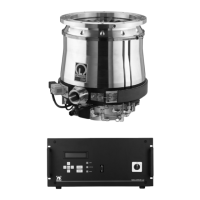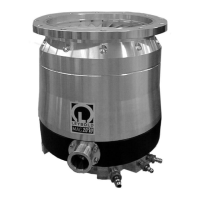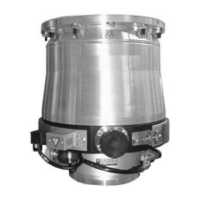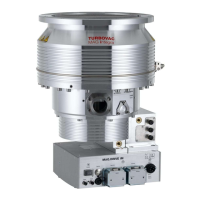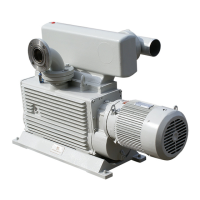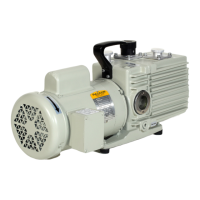GA05141_0702 - 09/2004
70
Operation
Actual temperature
The actual temperature is displayed on the operating display (refer to 3.10.1
Operating menu, Basic menu)
Signal TMS OK
If the actual TMS temperature lies in the range ±5K from the setpoint tem-
perature, the TMS OK signal can be output via the option relay. The option
relay must be programmed for this function (refer to Section 2.8.3 Control
plug X14, Relay outputs)
3.3 Power control system (PCS)
(only for MAG (W) 1500, 2200, 2800, 3200)
For safety reasons, motor power is limited depending on the temperatures
within the pump. Motor power will be highest when the pump is cold.
3.4 Operation at high gas
throughput or high forevacuum
pressure
In the operating software, the alarm triggers for the service life of the rotor
have been defined. After this service life period has elapsed the rotor needs
to be replaced. The alarm thresholds have been derived from the applica-
tions known to date.
Continuous operation at a high motor current will reduce the ser-
vice life of the rotor. In such cases additional safety measures
need to be introduced which must be co-ordinated with Leybold.
Also warming up of the rotor due to other influences will reduce its
service life, for example, pumping of hot process gases.
Turbomolecular pumps contain a large amount of kinetic energy
due to the high rotational speed in combination with the mass of
their rotors. In case of a malfunction of the system for example
rotor/stator contact or even a rotor crash the rotational energy
may be released.
In most applications the motor current will remain during continuous ope-
ration below the permitted maximum value. The alarm thresholds have
been selected in consideration of this maximum value. Depending on the
operation conditions the maximum service life of the rotor is 40,000 h. The
operation conditions depend on type of the gas, throughput and pressure.
With high gas load, especially when pumping Ar and SF
6
, the maximum
service life of the rotor may be shorter. In this case we must ask you to con-
sult us.
Also ensure that the high vacuum flange cannot warm up above the per-
missible temperature level.
Warning
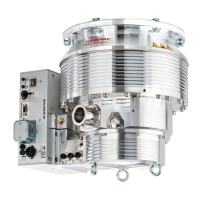
